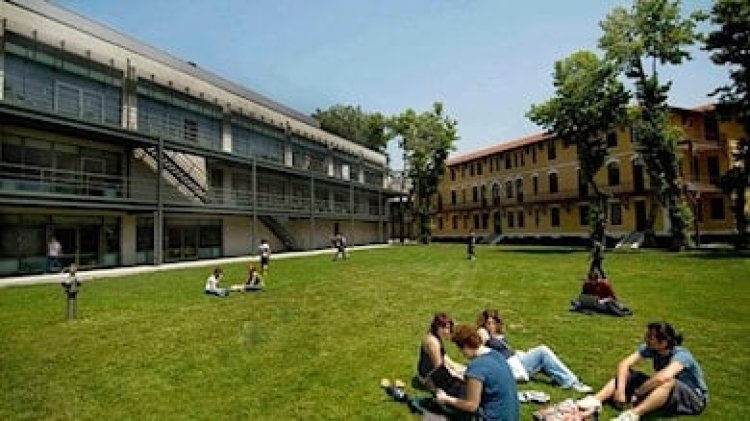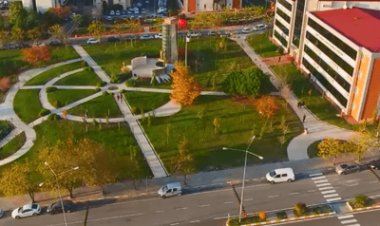Tarih yazımında idealize edilmiş mimar imgesi ve Sedad Hakkı Eldem örneği
Tarih yazımında idealize edilmiş mimar imgesi ve Sedad Hakkı Eldem örneği Koyuncu, Kübra Sabriye ÖZET: Mimarlık tarihyazım pratiğinde, mimar öznelerin tanrısal niteliklerle yüceltilerek idealize edilmesi; yüce, dâhi, kahraman gibi imgelerle tarihsel kişilik kültlerinin yaratılması oldukça yaygın bir alışkanlıktır. Yüceltilmiş kahraman kültü inşasını, toplumların -ya da belirli grupların- kimliklerini tanımlamak adına yaratılan araçlar olarak tanımlamak mümkündür ve tarih boyunca dünya genelinde sıklıkla başvurulan bir pratik olagelmiştir. Kahraman, dâhi birey gibi imgelerle mimar kimliğinin ideal niteliklerini, karakterini ve davranış seti gibi etmenleri tanımlama eğilimi toplumsal bir ideale işaret etmektedir ve tarih bu ideali hikâyeleştirerek alıcısına sunar. Ancak gerçekle bağdaşmayacak kadar idealize olmuş bu niteliklerin halen daha mimar kimliğine içkin değerlermişçesine göre sunuluyor olması problemli bir yaklaşımdır. Türkiye mimarlık tarihinin en önemli iki isminden biri olarak anılan Sedad Hakkı Eldem, yapmış olduğu eserler, araştırmalar ve ürettiği metinlerle Türkiye mimari ortamına yön vermekle kalmamış; hakkında konuşturan kişiliği ve henüz yaşarken kurgulamaya başladığı historiyografik kimliğiyle Türkiye mimarlık tarihi için kült bir figür haline gelmiştir. 50 seneyi bulan çalışma dönemi içinde mimari dinamiklerin sorunsallaştırıldığı her tartışma ortamında zaman zaman takdir gören, zaman zamansa yerilen başat aktörü olarak yer bulmuştur. Eldem’i, (öznel deneyimleri, yaşantısı, eserleri konu edilerek) Türkiye mimarlık tarihinde sahne almış aktörlerden biri olarak tartışmak yetmemiş; atfedilen tarihsel roller içinde ait olduğu toplumu nasıl etkilediğine dair anlatılar inşa edilmiştir. O, “ilk modern”dir; uomo universale tanımını karşılayan “ilk Türk mimar”dır; Türkiye mimarlığının esas meselesi milli mimarlığı var eden “öncü”dür. Ancak bu çalışmada, birçok mimar ve sanatçının göz ardı edilerek Sedad Hakkı Eldem’in “ilk/tek” olarak sunulmasında ısrarcı bir tutumun varlığı ortaya konarak problemleştirilmektedir. Bu nedenle tarihyazımında Sedad Hakkı Eldem kimliğinin hangi etmenler üzerinden inşa edildiğini, Sedad Hakkı Eldem üzerine yazılan metinlerin hangi psikolojik etmenler ve motivasyonlarca üretildiğini açığa çıkarmaya dair bir değerlendirme ortaya konulmaya çalışılmıştır.; ABSTRACT: In architectural historiographic practice, it is quite common to elevate and idealize architectural subjects by attributing them with divine qualities, creating historical personality cults with imagery such as greatness, genius, and heroism. The construction of an elevated hero cult can be defined as a tool utilized by societies or specific groups to define their identities, and throughout history, it has been a frequently employed practice worldwide. The tendency to define the ideal qualities, character, and behavioral patterns of the architectural identity through images of heroic and genius individuals signifies a societal ideal, which history presents to its audience through storytelling. However, presenting these overly idealized qualities as inherent values of the architectural identity, detached from reality, is a problematic approach. Sedad Hakkı Eldem, one of the most significant figures in the history of Turkish architecture, has not only shaped the architectural scene in Turkey through his works, research, and written texts but has also become a cult figure in Turkish architectural history due to his influential persona and the historiographic identity he began constructing even during his lifetime. Throughout his career spanning over 50 years, he has been both praised and criticized as a leading figure in every discussion that problematizes architectural dynamics. Discussing Eldem as one of the actors who have played a role in Turkish architectural history, by focusing on his subjective experiences, life, and works, was not enough; narratives have been constructed to explore how he influenced the society to which he belonged within the assigned historical roles. He is considered “the first modernist”, “the first Turkish architect" embodying the definition of uomo universale, and the “pioneer” responsible for the essential issue of national architecture in Turkey. However, this study aims to problematize the persistent attitude of presenting Sedad Hakkı Eldem as the "first/sole" figure while neglecting many other architects and artists. Therefore, an evaluation is attempted to uncover the factors on which the identity of Sedad Hakkı Eldem is constructed in historiography and to reveal the psychological factors and motivations behind the texts written about him.

Tarih yazımında idealize edilmiş mimar imgesi ve Sedad Hakkı Eldem örneği Koyuncu, Kübra Sabriye ÖZET: Mimarlık tarihyazım pratiğinde, mimar öznelerin tanrısal niteliklerle yüceltilerek idealize edilmesi; yüce, dâhi, kahraman gibi imgelerle tarihsel kişilik kültlerinin yaratılması oldukça yaygın bir alışkanlıktır.
Yüceltilmiş kahraman kültü inşasını, toplumların -ya da belirli grupların- kimliklerini tanımlamak adına yaratılan araçlar olarak tanımlamak mümkündür ve tarih boyunca dünya genelinde sıklıkla başvurulan bir pratik olagelmiştir.
Kahraman, dâhi birey gibi imgelerle mimar kimliğinin ideal niteliklerini, karakterini ve davranış seti gibi etmenleri tanımlama eğilimi toplumsal bir ideale işaret etmektedir ve tarih bu ideali hikâyeleştirerek alıcısına sunar.
Ancak gerçekle bağdaşmayacak kadar idealize olmuş bu niteliklerin halen daha mimar kimliğine içkin değerlermişçesine göre sunuluyor olması problemli bir yaklaşımdır. Türkiye mimarlık tarihinin en önemli iki isminden biri olarak anılan Sedad Hakkı Eldem, yapmış olduğu eserler, araştırmalar ve ürettiği metinlerle Türkiye mimari ortamına yön vermekle kalmamış; hakkında konuşturan kişiliği ve henüz yaşarken kurgulamaya başladığı historiyografik kimliğiyle Türkiye mimarlık tarihi için kült bir figür haline gelmiştir. 50 seneyi bulan çalışma dönemi içinde mimari dinamiklerin sorunsallaştırıldığı her tartışma ortamında zaman zaman takdir gören, zaman zamansa yerilen başat aktörü olarak yer bulmuştur. Eldem’i, (öznel deneyimleri, yaşantısı, eserleri konu edilerek) Türkiye mimarlık tarihinde sahne almış aktörlerden biri olarak tartışmak yetmemiş; atfedilen tarihsel roller içinde ait olduğu toplumu nasıl etkilediğine dair anlatılar inşa edilmiştir.
O, “ilk modern”dir; uomo universale tanımını karşılayan “ilk Türk mimar”dır; Türkiye mimarlığının esas meselesi milli mimarlığı var eden “öncü”dür.
Ancak bu çalışmada, birçok mimar ve sanatçının göz ardı edilerek Sedad Hakkı Eldem’in “ilk/tek” olarak sunulmasında ısrarcı bir tutumun varlığı ortaya konarak problemleştirilmektedir. Bu nedenle tarihyazımında Sedad Hakkı Eldem kimliğinin hangi etmenler üzerinden inşa edildiğini, Sedad Hakkı Eldem üzerine yazılan metinlerin hangi psikolojik etmenler ve motivasyonlarca üretildiğini açığa çıkarmaya dair bir değerlendirme ortaya konulmaya çalışılmıştır.;
ABSTRACT: In architectural historiographic practice, it is quite common to elevate and idealize architectural subjects by attributing them with divine qualities, creating historical personality cults with imagery such as greatness, genius, and heroism. The construction of an elevated hero cult can be defined as a tool utilized by societies or specific groups to define their identities, and throughout history, it has been a frequently employed practice worldwide. The tendency to define the ideal qualities, character, and behavioral patterns of the architectural identity through images of heroic and genius individuals signifies a societal ideal, which history presents to its audience through storytelling. However, presenting these overly idealized qualities as inherent values of the architectural identity, detached from reality, is a problematic approach. Sedad Hakkı Eldem, one of the most significant figures in the history of Turkish architecture, has not only shaped the architectural scene in Turkey through his works, research, and written texts but has also become a cult figure in Turkish architectural history due to his influential persona and the historiographic identity he began constructing even during his lifetime. Throughout his career spanning over 50 years, he has been both praised and criticized as a leading figure in every discussion that problematizes architectural dynamics. Discussing Eldem as one of the actors who have played a role in Turkish architectural history, by focusing on his subjective experiences, life, and works, was not enough; narratives have been constructed to explore how he influenced the society to which he belonged within the assigned historical roles. He is considered “the first modernist”, “the first Turkish architect" embodying the definition of uomo universale, and the “pioneer” responsible for the essential issue of national architecture in Turkey. However, this study aims to problematize the persistent attitude of presenting Sedad Hakkı Eldem as the "first/sole" figure while neglecting many other architects and artists. Therefore, an evaluation is attempted to uncover the factors on which the identity of Sedad Hakkı Eldem is constructed in historiography and to reveal the psychological factors and motivations behind the texts written about him.

 Bilgi
Bilgi 















